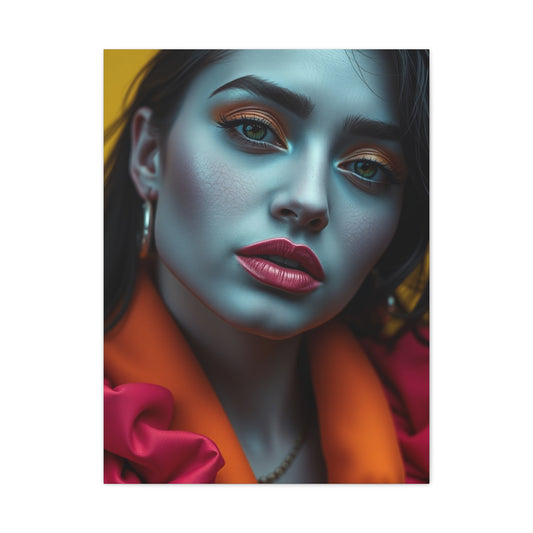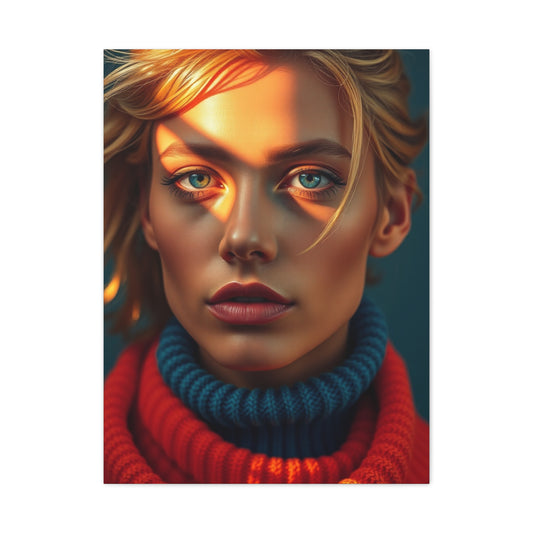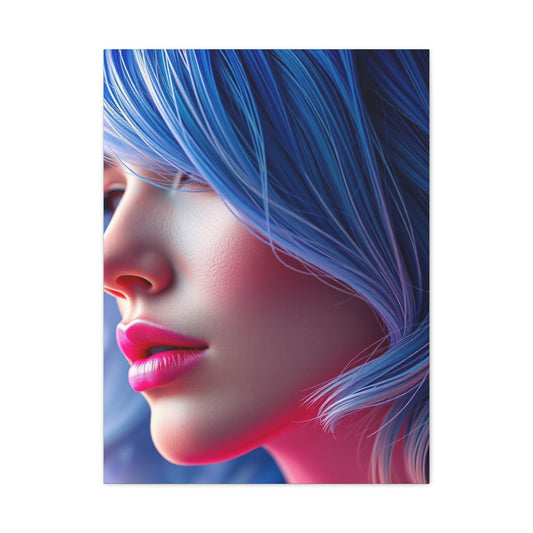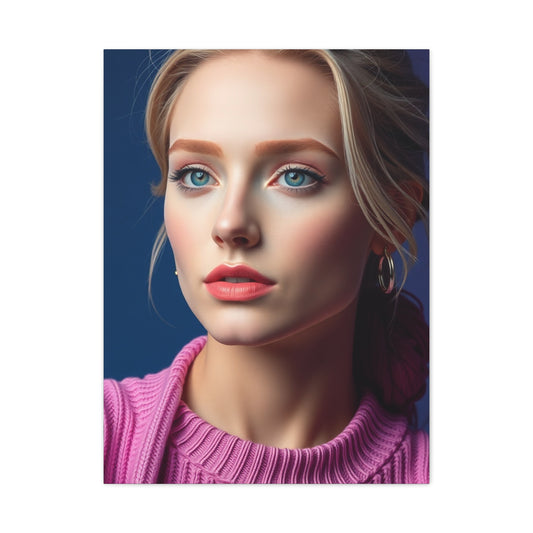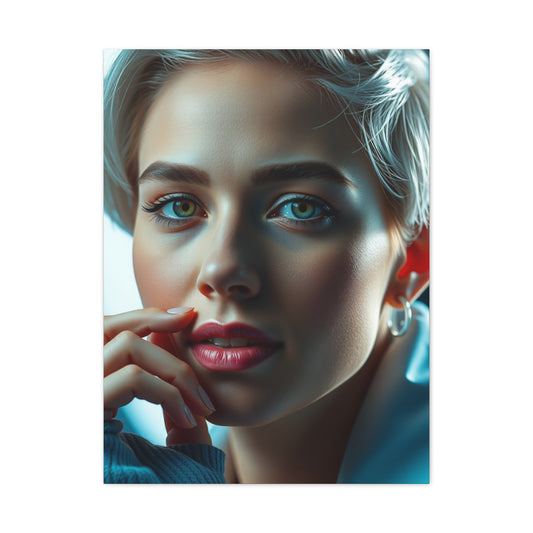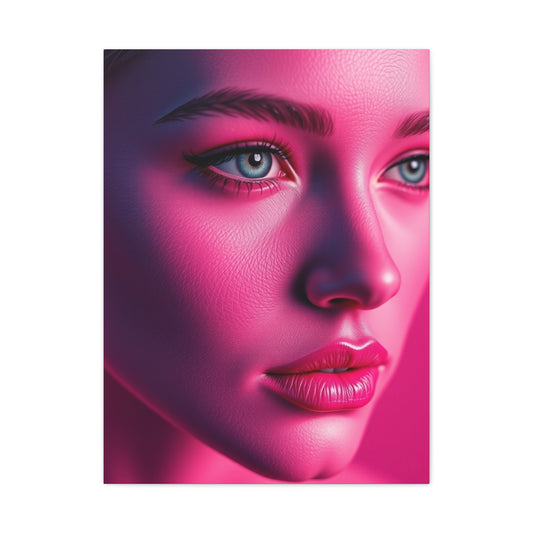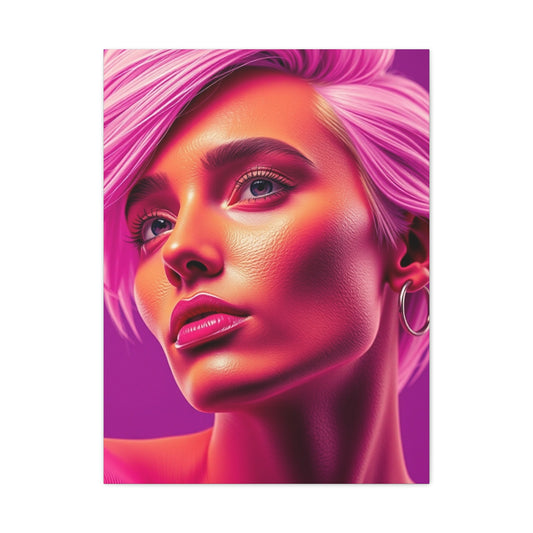Wall Art Inspirations Inspired by Pantone’s Color of the Year
Pantone’s Color of the Year has evolved into a cultural touchstone, tracing its origins back to 1999 when Cerulean was unveiled to lead the world into the new millennium. More than two decades later, this annual selection has become a highly anticipated signal of creative direction for designers, artists, and color enthusiasts worldwide. Each hue is carefully curated to reflect societal moods, collective aspirations, and the subtle shifts in global consciousness. Wall art, interior design, fashion, and digital aesthetics often draw inspiration from these selections, making the Color of the Year a powerful influence across visual landscapes.
The process behind each selection is far from whimsical. Leatrice Eiseman, executive director of the Pantone Color Institute, emphasizes that the team conducts extensive research to understand evolving human perceptions, desires, and attitudes. These colors serve not merely as trends but as reflections of the world’s emotional and cultural climate, offering both inspiration and guidance. Wall art infused with the Color of the Year transforms spaces, evoking feelings that resonate deeply with viewers and creating environments that align with the spirit of the time.
Background
Pantone’s journey of selecting a color annually began at the turn of the century, a deliberate nod to a new era of design thinking and global connectivity. Cerulean, a serene blue, set the precedent for what has now become a celebrated ritual in the creative industries. Over the years, more than 25 selections have guided everything from fashion runways to home décor, influencing palettes in architecture, wall art, and product design.
The Pantone Color Institute maintains a vast database of color variations, enabling experts to narrow down shades that not only capture aesthetic appeal but also embody broader societal trends. Eiseman describes the process as an endeavor to grasp human aspirations and evolving tastes, ensuring that each choice mirrors both present needs and future inclinations. This methodical approach guarantees that every color is deeply meaningful, transcending simple decorative function to become a vehicle for emotional expression. Wall art featuring these hues captures this essence, translating abstract ideas into tangible visual experiences that transform ordinary walls into storytelling canvases.
Key Concepts
Pantone’s Color of the Year operates at the intersection of psychology, culture, and design. Every shade communicates mood, conveys symbolism, and informs creative decision-making. For instance, warm and inviting hues like Mocha Mousse encourage comfort and connection, while bold tones such as Viva Magenta inspire energy and confidence. The institute examines trends across industries, global events, art movements, and social sentiment to ensure each selection resonates universally.
With a commitment to influencing the visual culture, Pantone’s colors appear prominently in wall art, allowing homeowners, designers, and public spaces to reflect the zeitgeist. Wall art provides a canvas for experimentation with texture, composition, and layering of the chosen color, translating abstract emotional qualities into visual storytelling. A living room adorned with 2025’s Mocha Mousse or a study space inspired by 2022’s Very Peri is not only aesthetically pleasing but also psychologically attuned to comfort, creativity, or tranquility.
The institute’s methodology is rigorous. Each color is analyzed for its cultural significance, potential longevity, and adaptability to multiple media. For example, Illuminating, paired with Ultimate Gray in 202,1, highlighted resilience and optimism, emphasizing contrasts that speak to both the challenges and hopes of contemporary society. Wall art derived from these palettes allows for visual dialogue, combining subtlety and statement-making qualities in a way that transforms ordinary walls into immersive experiences.
Pantone Color Timeline and Wall Art Inspirations
2025: Mocha Mousse
Mocha Mousse, a mellow brown, represents thoughtful indulgence and warmth. The shade reflects simple pleasures, from morning coffee to moments of shared joy. In wall art, Mocha Mousse serves as a grounding backdrop, evoking cozy environments that balance elegance with emotional intimacy.
2024: Peach Fuzz
A delicate blend of pink and orange, Peach Fuzz embodies nurturing, compassion, and calm. Wall art infused with this hue radiates serenity, making spaces inviting and gentle, ideal for areas meant for reflection or social connection.
2023: Viva Magenta
Viva Magenta balances warm and cool undertones, embodying energy, creativity, and vibrancy. Wall art using this vivid shade can command attention without overwhelming, allowing spaces to explore dynamic compositions that celebrate courage and optimism.
2022: Very Peri
A unique periwinkle blue with violet-red undertones, Very Peri bridges digital and physical worlds. Incorporating this hue into wall art fosters futuristic and innovative atmospheres, inspiring exploration of new ideas while complementing modern interior designs.
2021: Illuminating and Ultimate Gray
Illuminating’s bright yellow, paired with the steadfastness of Ultimate Gray, conveys hope and resilience. Wall art combining these shades introduces balanced contrasts that highlight the interplay between vibrancy and stability, encouraging harmony within a space.
2020: Classic Blue
Classic Blue conveys confidence, reliability, and tranquility. Wall art featuring this enduring hue provides calm and familiarity, establishing a timeless aesthetic ideal for both private homes and public installations.
2019: Living Coral
Energetic yet comforting, Living Coral stimulates playfulness while nurturing the senses. Wall art featuring this golden coral tone fosters warmth and inclusivity, echoing natural inspirations like coral reefs and sunsets.
2018: Ultra Violet
Ultra Violet, a provocative and thoughtful purple, embodies originality, imagination, and vision. Wall art with this color can evoke mystery and transcendence, perfect for creative studios or contemplative spaces.
2017: Greenery
Greenery represents renewal, rejuvenation, and vitality. Wall art infused with this zesty yellow-green energizes environments while connecting interiors with natural landscapes, enhancing the sense of freshness and balance.
2016: Rose Quartz and Serenity
Rose Quartz and Serenity, a pairing of soft pink and cool blue, evoke compassion, composure, and calm. Wall art utilizing these complementary shades creates harmonious spaces, promoting relaxation, reflection, and balanced energy flow.
2015: Marsala
Marsala, a rich red-brown, encourages creativity and sophistication. Incorporating this color into wall art conveys grounded elegance while offering warmth and depth to any interior.
2014: Radiant Orchid
Radiant Orchid blends fuchsia and purple, inspiring confidence and joy. Wall art in this shade makes a bold statement or serves as an accent, enlivening rooms with vivacity and charm.
2013: Emerald
Emerald embodies growth, prosperity, and renewal. Wall art featuring this lush green conveys luxury, balance, and rejuvenation, creating spaces that feel alive and harmonious.
2012: Tangerine Tango
Tangerine Tango’s fiery red-orange energizes and revitalizes spaces. Wall art using this hue can uplift interiors, adding dynamism and an inviting warmth that draws attention and encourages engagement.
2011: Honeysuckle
Honeysuckle, a vibrant reddish pink, boosts confidence and optimism. Wall art in this shade transforms spaces into uplifting, cheerful environments, suitable for lively living areas or communal spaces.
2010: Turquoise
Turquoise balances blue and green, providing serenity and invigoration. Wall art in this color evokes tropical calm, inspiring relaxation and creativity simultaneously.
2009: Mimosa
Mimosa, a warm yellow, radiates hope and enlightenment. Wall art infused with Mimosa fosters joy and imagination, ideal for welcoming and vibrant interiors.
2008: Blue Iris
Blue Iris, a blend of blue and purple, offers reassurance and intrigue. Wall art in this shade combines stability with mystique, suitable for contemplative spaces or elegant design statements.
2007: Chili Pepper
Chili Pepper, a deep red, conveys passion, adventure, and sophistication. Wall art in this color adds drama and intensity, creating a focal point that stimulates emotional engagement.
2006: Sand Dollar
Sand Dollar, a soft neutral, evokes relaxation and comfort. Wall art using this shade promotes calm, understated elegance, reminiscent of sunlit beaches and tranquil natural scenes.
2005: Blue Turquoise
Blue Turquoise, a cool sea-inspired hue, conveys serenity and imagination. Wall art in this shade transports viewers to coastal paradises, inspiring peacefulness and creative thought.
2004: Tigerlily
Tigerlily, a red-yellow blend, embodies boldness and creativity. Wall art in this shade energizes spaces, encouraging expressive design and audacious decorative choices.
2003: Aqua Sky
Aqua Sky, a blue-green hue, inspires hope and serenity. Wall art featuring this color evokes clear waters and open skies, fostering uplifting and calming atmospheres.
2002: True Red
True Red symbolizes strength, courage, and love. Wall art incorporating this color makes a vivid statement, reflecting resilience and heartfelt energy in interiors.
2001: Fuchsia Rose
Fuchsia Rose, a vibrant pink, exudes warmth and intensity. Wall art in this hue energizes rooms, providing both visual impact and emotional depth.
2000: Cerulean
Cerulean, a powdery blue, initiated the Pantone Color of the Year tradition. Wall art in Cerulean embodies relaxation and clarity, creating spaces that feel inviting and serene.
Importance and Benefits of Wall Art
Wall art serves as more than mere decoration; it is a medium through which spaces gain character, emotion, and narrative. The significance of wall art stretches across psychological, aesthetic, and cultural domains, influencing mood, perception, and creativity. Colors, textures, and forms in wall art can transform the ambiance of a room, offering tranquility, excitement, or introspection depending on their interplay. Beyond aesthetics, wall art establishes a sense of identity within homes, offices, or public spaces, reflecting personal tastes, historical influences, and societal trends.
One of the key benefits of wall art lies in its ability to influence emotional states. Warm hues like Mocha Mousse or Tangerine Tango invoke comfort, energy, and optimism, while cooler shades such as Cerulean or Aqua Sky provide serenity and focus. Wall art encourages mindfulness and engagement with one’s surroundings, fostering an environment where daily experiences are enriched through color and form. Spaces adorned with carefully curated wall art often evoke feelings of inspiration, motivation, and even relaxation, allowing inhabitants or viewers to connect with the room on a deeper sensory level.
Furthermore, wall art is a powerful tool for storytelling and cultural expression. Each piece carries meaning, whether inspired by natural landscapes, historical moments, or abstract concepts. It can commemorate achievements, evoke nostalgia, or articulate societal commentary, embedding layers of significance into the environment. The benefits extend to practical applications as well; for example, strategic use of wall art can visually expand smaller rooms, emphasize architectural features, or create focal points that draw attention and guide movement through a space.
In modern design, wall art also bridges the gap between traditional techniques and contemporary innovation. By incorporating colors from Pantone’s annual selections, artists and designers maintain relevance while honoring timeless principles of balance, proportion, and harmony. The integration of wall art into interiors or public installations enhances engagement, sparks conversation, and enriches the sensory experience of all who encounter it.
Evolution of Wall Art Styles
Wall art has undergone a remarkable evolution, reflecting shifts in cultural, technological, and artistic paradigms. From classical frescoes and intricate tapestries to modern abstract compositions and digital installations, wall art continually adapts to the needs and sensibilities of each era. Early wall adornments often carried symbolic or ceremonial significance, depicting myths, religious narratives, and communal values, while later styles embraced aesthetics as a vehicle for individual expression and decorative innovation.
The Renaissance era introduced a focus on realism, perspective, and anatomical accuracy, influencing wall art that captured human emotion and intricate natural landscapes. Murals and canvases became immersive experiences, transporting viewers into painted realms. With the advent of Impressionism, brushwork and color became instruments of sensation rather than mere representation, paving the way for expressive and emotive wall art that engaged viewers on an experiential level.
Modernism further revolutionized wall art, emphasizing abstraction, conceptual frameworks, and experimentation with media. Artists challenged traditional boundaries, using geometric forms, unconventional textures, and new materials to communicate complex ideas. Pop Art, Surrealism, and Minimalism introduced playful, provocative, or reductive approaches that redefined the visual language of interiors and public spaces. Today, wall art is a fusion of heritage and innovation, often blending digital projections, mixed media, and interactive elements to create multisensory experiences.
Throughout this evolution, wall art has maintained its role as a cultural mirror, capturing social shifts, technological advances, and aesthetic philosophies. Contemporary wall art integrates historical awareness with modern sensibilities, offering opportunities for personalization and expression that resonate with viewers while enhancing architectural environments. Pantone’s annual color selections often inspire these adaptations, providing a palette that aligns with current societal moods and design innovations.
Techniques Used in Wall Art
The creation of wall art involves a diverse array of techniques, each contributing to the texture, depth, and emotional resonance of a piece. Traditional methods such as fresco painting, oil on canvas, and watercolor offer timeless elegance, allowing for nuanced manipulation of color, light, and shading. These approaches demand technical skill and patience, resulting in enduring works that transform walls into rich visual narratives.
Contemporary wall art embraces experimentation, incorporating mixed media, collage, and unconventional materials. Artists blend acrylics with digital prints, fabric, metallic foils, or reclaimed objects, producing textured, multidimensional compositions. This hybridity expands the possibilities of expression, allowing wall art to engage multiple senses and evoke complex emotional responses. For instance, a mural that combines pigment with sculptural elements can create a tactile experience that invites physical interaction alongside visual appreciation.
Digital techniques have introduced entirely new dimensions to wall art. Projection mapping, augmented reality, and LED installations allow for dynamic, immersive experiences where colors, shapes, and motion interact with viewers in real time. Such approaches transform walls into living canvases, responsive to environmental conditions or audience engagement. Even traditional painting methods are enhanced by digital tools, enabling precise color matching, layering, and experimentation inspired by Pantone’s annual selections.
Techniques also vary according to context and purpose. In residential spaces, subtle gradients, texture washes, and accent panels provide elegance and harmony, complementing furniture and interior design. In commercial or public spaces, bold murals, interactive installations, and large-scale graphics create visual impact, guide movement, and communicate branding or thematic narratives. Wall art techniques are selected not only for aesthetic appeal but also for psychological and experiential effect, ensuring that the art resonates with viewers and harmonizes with the environment.
Color application is a foundational technique that determines the mood and emotional tone of wall art. Carefully calibrated palettes, often inspired by Pantone’s selections, allow artists to evoke energy, calm, warmth, or introspection. Layering and blending techniques create depth and dimensionality, while contrasts and harmonies guide the eye and enhance narrative flow. Texture, whether through brushstroke, impasto, or mixed media, adds tactile richness that engages viewers beyond the visual plane.
Emerging methods also incorporate sustainable and eco-conscious practices. Natural pigments, recycled materials, and water-based mediums reflect growing environmental awareness, merging aesthetics with ethical responsibility. Wall art created through these practices not only beautifies spaces but also communicates values, making sustainability an integral part of design expression.
The interplay of traditional and contemporary techniques ensures that wall art remains dynamic, adaptable, and culturally relevant. Artists draw inspiration from historical precedents while embracing innovation, resulting in works that are visually compelling, emotionally resonant, and deeply connected to the social and cultural context. By employing diverse techniques, wall art continues to captivate, educate, and inspire, turning walls into vibrant narratives that reflect human creativity and collective experience.
Integration of Wall Art in Modern Spaces
In modern interiors, wall art serves as both an aesthetic anchor and a storytelling medium. The integration of wall art into homes, offices, and public spaces transforms blank surfaces into focal points that define atmosphere, highlight architecture, and convey thematic messages. Contemporary designers often pair wall art with lighting, furniture, and architectural elements to create cohesive environments that evoke desired moods and experiences.
In residential design, wall art enhances personality and comfort. Large-scale murals, abstract canvases, or framed compositions can establish a sense of place, whether energizing a living area, inspiring productivity in a workspace, or fostering tranquility in a bedroom. Colors drawn from Pantone’s annual selections offer designers guidance in harmonizing hues, ensuring emotional resonance, and aesthetic balance. Wall art can be layered with textiles, furniture, and decorative elements to create immersive environments that stimulate the senses and elevate daily experiences.
Commercial and public spaces leverage wall art for visual storytelling and engagement. Corporate offices, hotels, galleries, and retail environments use murals, installations, and interactive pieces to communicate brand identity, guide visitor experience, and enrich aesthetic appeal. Wall art in these contexts often incorporates scale, texture, and interactivity to captivate attention and encourage exploration. Incorporating Pantone’s trending colors allows businesses to align visual communication with contemporary cultural sentiment, signaling awareness of trends and creating environments that resonate with visitors.
Urban wall art, street murals, and community projects extend the influence of artistic expression into public consciousness. These works transform ordinary urban surfaces into dynamic canvases that inspire, provoke thought, or celebrate cultural identity. Public wall art creates shared experiences, uniting communities while amplifying messages of social relevance. Techniques employed in these contexts often include spray painting, large-format stenciling, and projection mapping, demonstrating the versatility and adaptability of wall art across scales and settings.
The convergence of aesthetics, psychology, and functionality underscores the importance of wall art in contemporary spaces. Whether through subtle accent pieces or immersive installations, wall art shapes perception, enhances experience, and conveys meaning. By integrating color, form, texture, and narrative, wall art transforms surfaces into dynamic environments that communicate mood, celebrate creativity, and foster human connection.
Step-by-Step Guide to Choosing Wall Art
Selecting wall art for a space requires more than intuition; it is a careful orchestration of color, scale, texture, and emotional resonance. The process begins with understanding the purpose of the space and the atmosphere you wish to evoke. A living room may benefit from dynamic compositions that inspire conversation, whereas a bedroom thrives with calming, soothing imagery. Wall art serves as both a visual anchor and an emotional conduit, influencing the mood of the room while reflecting personal or collective identity.
The first step in choosing wall art involves evaluating the spatial dimensions and architectural characteristics of the room. Walls with expansive surfaces may accommodate large-scale pieces or mural-style art that commands attention, while more intimate areas are suited to small or medium compositions that create cozy focal points. Consider the balance between wall art and existing furnishings; a harmonious relationship between shapes, colors, and textures ensures the artwork enhances the space rather than overwhelming it. Pantone-inspired hues from the Color of the Year program can guide choices, aligning wall art with contemporary trends while maintaining timeless appeal.
Next, the emotional intent of the wall art must be assessed. Colors, forms, and subject matter all carry psychological significance. Warm tones such as Tangerine Tango or Mocha Mousse evoke comfort and vitality, whereas cooler shades like Aqua Sky or Cerulean promote serenity and contemplation. Abstract compositions offer interpretive engagement, stimulating thought and conversation, while figurative or narrative artwork conveys explicit stories or symbolism. Matching the emotional resonance of wall art to the intended use of the space creates an immersive and meaningful experience for those who inhabit or visit the area.
Texture and medium also play critical roles in selecting wall art. Smooth, polished finishes reflect light and create a sense of expansiveness, while rough or layered textures add depth and tactile intrigue. Mixed media pieces, incorporating materials such as metal, wood, or fabric, introduce dimensionality that invites physical and visual exploration. The interplay of texture, color, and scale transforms wall art from mere decoration into a living component of the environment.
Another key consideration is thematic coherence. Wall art can complement existing décor or establish a new narrative within a room. Curating pieces that share complementary color palettes, motifs, or stylistic approaches ensures a cohesive visual language. Pantone’s annual selections often provide a unifying thread, offering inspiration for consistent yet versatile color schemes. Whether selecting a single statement piece or an ensemble of smaller works, coherence in theme enhances the immersive quality of wall art.
Lighting significantly impacts the perception of wall art. Natural light emphasizes tonal subtleties, while artificial lighting can be manipulated to highlight textures, create shadows, and accentuate focal points. The direction, intensity, and color temperature of illumination interact with the artwork to influence its visual and emotional effect. Proper lighting not only showcases the beauty of wall art but also integrates it seamlessly with the surrounding architecture and furnishings.
Solutions for Integrating Wall Art
Integrating wall art effectively requires creative solutions that harmonize the artwork with the space and its occupants. One approach is to use wall art as a focal anchor around which the rest of the room is designed. A bold, vivid piece can define the mood of a living room, dining area, or office, while smaller, complementary pieces create supporting narratives. Pantone’s colors can inspire these focal points, infusing the environment with contemporary relevance and emotional resonance.
Gallery walls offer another integration solution, combining multiple pieces into a curated ensemble. This approach allows for thematic exploration, visual variety, and layered storytelling. Wall art can be arranged in grids, asymmetrical clusters, or linear sequences, creating rhythm and movement that guide the eye. Attention to spacing, scale, and visual hierarchy ensures cohesion, allowing each piece to contribute to the collective narrative while maintaining individual impact.
For spaces with limited wall area, innovative solutions include vertical stacking, modular panels, or rotating exhibitions of wall art. These strategies maximize the visual potential of the space while introducing flexibility and dynamism. Changing wall art periodically allows rooms to evolve alongside trends, moods, or seasons, keeping interiors fresh and engaging. Pantone-inspired rotations ensure the integration of current colors while preserving harmony with existing décor.
Wall art can also function as a bridge between contrasting design elements. For instance, modern minimalist interiors can be enlivened with bold, expressive pieces, while classical or ornate spaces may benefit from abstract or contemporary artwork that introduces contrast and intrigue. This interplay of style and substance enriches the environment, offering layered visual experiences that stimulate engagement and reflection.
Custom wall art provides tailored solutions for unique spaces. Commissioned pieces allow for precise consideration of scale, color, subject matter, and medium, ensuring the artwork aligns perfectly with architectural dimensions, lighting, and functional requirements. Personalized wall art can incorporate local cultural references, family narratives, or symbolic motifs, creating spaces imbued with meaning and identity. Utilizing Pantone’s yearly color selections in custom designs bridges contemporary aesthetics with personal storytelling, producing art that is both current and deeply resonant.
Interactive and experiential wall art represents a forward-looking solution for public spaces, offices, and creative environments. Projections, augmented reality layers, and tactile installations invite active participation, transforming viewers from passive observers to engaged participants. These forms of wall art harness technology and innovation, offering multisensory experiences that enrich engagement and leave lasting impressions. Incorporating trending colors ensures that the visual impact is contemporary, emotionally resonant, and visually compelling.
Wall art can also solve challenges related to spatial imbalance or monotony. For narrow corridors, vertical compositions draw the eye upward, enhancing perceived height. Large, blank walls in open-plan spaces benefit from expansive murals or textured panels that break monotony and establish zones of interest. Color selection, guided by Pantone’s annual choices, enhances these interventions, creating emotional resonance while maintaining aesthetic coherence.
Integration extends beyond aesthetics to emotional and functional well-being. Wall art can inspire creativity, reduce stress, and foster mindfulness. Strategically placed artwork in workspaces, healthcare facilities, or educational settings enhances focus, encourages introspection, and promotes positivity. Pantone-inspired wall art leverages color psychology, harmonizing spaces with human emotion and cognition.
Collaborative wall art solutions also emerge in community settings. Participatory murals or modular installations engage local populations, reflecting shared values and cultural narratives. This approach transforms walls into platforms for social cohesion, storytelling, and collective identity. Incorporating trending color palettes ensures that such collaborative projects feel contemporary, inclusive, and visually vibrant.
Material innovation enhances solutions for wall art integration. Lightweight panels, flexible substrates, and modular systems allow for portability, adaptability, and easy maintenance. These innovations expand the potential for dynamic interior experiences, enabling spaces to evolve alongside the tastes and needs of occupants. Whether through traditional painting, mixed media, or digital installations, thoughtful material choice ensures durability, visual appeal, and seamless integration with architectural elements.
Wall art also offers solutions for highlighting architectural features or concealing imperfections. A mural can draw attention to a high ceiling, emphasize structural lines, or visually expand confined areas. Panels and layered compositions can mask blemishes, structural inconsistencies, or transitions between materials, turning potential limitations into creative opportunities. Pantone-inspired hues guide these solutions, balancing aesthetic harmony with functional considerations.
The strategic use of scale, proportion, and repetition enhances the integration of wall art. Large-scale works establish presence and drama, while smaller pieces can create rhythm, punctuate transitions, or accentuate focal points. Groupings of multiple artworks allow for variation in form, texture, and color while maintaining a coherent visual narrative. By considering human perspective, viewing distance, and spatial dynamics, wall art becomes an immersive element rather than a decorative afterthought.
Sustainability-focused solutions have gained prominence in wall art design. Eco-friendly paints, recycled materials, and locally sourced components reduce environmental impact while enhancing conceptual depth. Wall art that incorporates sustainable practices communicates values alongside aesthetics, creating spaces that are environmentally responsible, visually inspiring, and culturally relevant. Pantone color selections can be applied through natural pigments or low-impact materials, maintaining contemporary vibrancy without compromising ecological integrity.
Lighting and placement strategies provide additional solutions for maximizing the impact of wall art. Directional lighting emphasizes texture, highlights chromatic subtleties, and enhances depth, while indirect illumination creates ambient effects that support emotional tone. Wall art positioned at eye level or integrated with architectural features ensures visual engagement and accessibility. Seasonal or thematic rotation of pieces introduces freshness and dynamic energy into static environments.
By blending artistic principles, technical precision, and thoughtful solutions, wall art transforms spaces into immersive, emotionally resonant environments. Whether addressing aesthetic, functional, or cultural objectives, effective wall art integration elevates interiors and public spaces alike. Carefully curated compositions, informed by Pantone’s annual colors and grounded in an understanding of human perception, provide a roadmap for creating spaces that inspire, delight, and endure.
Future Outlook for Wall Art
The trajectory of wall art is evolving at an unprecedented pace, shaped by technological innovation, cultural shifts, and a growing desire for personal expression. While traditional techniques and materials continue to hold their allure, the integration of digital tools, sustainable practices, and immersive experiences is redefining what wall art can be. Future spaces will increasingly embrace wall art as a dynamic element that interacts with occupants, transforms moods, and bridges the physical and virtual realms.
One of the defining trends in the future of wall art is the convergence of technology and sensory experience. Digital projections, interactive installations, and augmented reality overlays allow walls to respond to touch, motion, and environmental conditions. This interactivity transforms passive observers into engaged participants, creating environments that evolve with human presence. Color, a core component of wall art, is being amplified through LED and projection technologies, enabling the integration of Pantone-inspired palettes in ways that shift dynamically with light, time, or audience interaction. These innovations extend the expressive potential of wall art beyond static compositions, inviting users to engage emotionally, cognitively, and physically.
Sustainability will also play a central role in the evolution of wall art. Eco-conscious materials, low-impact paints, and upcycled components will become integral to the design and production of wall art. Artists and designers are exploring biodegradable substrates, reclaimed metals, and organic pigments that not only reduce environmental impact but also impart a unique texture and authenticity to each piece. Future wall art will not merely decorate spaces; it will communicate values, ethics, and an awareness of global responsibility. By harmonizing visual appeal with ecological mindfulness, wall art becomes a medium of social dialogue and cultural leadership.
The customization of wall art is anticipated to expand, allowing individuals and organizations to curate environments that reflect personality, narrative, and identity. Advanced fabrication techniques, including 3D printing, CNC machining, and laser cutting, provide unprecedented precision and flexibility. These methods enable wall art to adapt to architectural contours, spatial dimensions, and thematic requirements with meticulous accuracy. Personalized wall art, inspired by current color trends or individual preferences, transforms spaces into immersive environments that are simultaneously unique and resonant with contemporary design sensibilities.
In parallel, the role of wall art in public and communal spaces will continue to grow. Urban murals, participatory installations, and cultural exhibitions are creating shared experiences that foster community identity and social engagement. Walls serve as platforms for storytelling, memory, and dialogue, transforming ordinary streets, buildings, and institutions into spaces of collective reflection. Future wall art will likely integrate digital media, interactive sensors, and modular elements, allowing communities to adapt narratives in real time and engage audiences in participatory creation. Pantone-inspired color schemes will ensure that these evolving works remain visually compelling while aligned with cultural and emotional currents.
Another emergent dimension is the therapeutic application of wall art. Research increasingly highlights the psychological impact of color, form, and spatial design on human well-being. Wall art can reduce stress, enhance creativity, and improve focus, making it invaluable in healthcare facilities, educational environments, and workplaces. Future designs will likely employ biofeedback, responsive lighting, and color modulation to create immersive experiences tailored to emotional and cognitive states. By harmonizing color theory, spatial arrangement, and aesthetic appeal, wall art can foster environments that are both restorative and inspiring.
Globalization and cross-cultural exchange are also shaping the future of wall art. Artists and designers draw inspiration from diverse traditions, blending motifs, techniques, and philosophies from multiple regions. This fusion creates compositions that celebrate global connectivity while honoring local identity. Digital platforms allow wall art to transcend physical boundaries, offering virtual exhibitions, interactive online experiences, and cross-continental collaborations. These developments amplify the accessibility of wall art, enabling audiences worldwide to experience, interpret, and be inspired by diverse visual narratives.
Material innovation will continue to expand the expressive potential of wall art. Advanced polymers, translucent composites, and smart materials capable of changing opacity, texture, or color in response to stimuli are poised to redefine the medium. Such innovations allow walls to transform from static surfaces into adaptable canvases, creating responsive environments, engaging and emotionally resonant. Artists will be able to explore previously unimaginable textures, forms, and interactions, elevating wall art to a multi-sensory and transformative experience.
The integration of AI and machine learning into wall art creation is another anticipated trend. Algorithms can analyze color trends, spatial composition, and audience engagement to generate designs optimized for aesthetic and emotional impact. AI-driven wall art can adapt in real time, shifting colors, patterns, and even themes based on viewer interaction, time of day, or environmental cues. These intelligent systems allow for a level of personalization and responsiveness previously unattainable, further solidifying wall art as a dynamic component of modern interior and exterior spaces.
Despite technological advances, the core of wall art will continue to be its capacity to evoke emotion, communicate narratives, and transform spaces. Future wall art will likely blend tradition and innovation, combining classical techniques with modern materials, digital augmentation, and interactive elements. The balance between aesthetic beauty, emotional resonance, and cultural relevance will remain central to the creation of compelling wall art. Designers and artists will continue to explore harmony between visual impact, spatial integration, and human experience, ensuring that wall art maintains its role as a transformative and enriching presence.
The educational aspect of wall art is also poised to expand. Art institutions, online platforms, and design programs will guide the integration of wall art into environments effectively. Instruction on color theory, texture manipulation, and spatial dynamics will equip new generations of designers to create environments that are visually stunning, emotionally attuned, and culturally meaningful. Future wall art will not only inspire audiences but also educate them, fostering an appreciation for artistry, craftsmanship, and thoughtful design.
Cultural resonance will remain a critical consideration. Wall art of the future will continue to reflect societal values, aspirations, and collective consciousness. Colors inspired by Pantone’s yearly selections will help anchor visual narratives within current cultural contexts, while innovative techniques and materials provide contemporary expression. Artists and designers will increasingly create wall art that speaks to shared human experiences, using color, form, and texture to engage audiences in a dialogue that transcends time and geography.
Ultimately, the future of wall art envisions environments as living, breathing ecosystems of expression. Walls will serve as more than structural elements; they will become canvases for emotion, narrative, and innovation. From private residences to urban streetscapes, wall art will harmonize aesthetic beauty, functional design, and technological sophistication. By embracing interactivity, sustainability, customization, and cultural resonance, wall art will continue to enrich lives, elevate spaces, and reflect the evolving values of societies worldwide.
Conclusion
Wall art remains an enduring and transformative element within human environments. Across history, it has captured emotion, narrative, and culture, evolving alongside societies while continually redefining its purpose and potential. The journey from classical frescoes to digital, interactive, and sustainable installations illustrates the limitless possibilities of wall art as both a medium and a message. By embracing color, texture, scale, and thematic coherence, wall art elevates spaces, fosters emotional well-being, and enriches everyday experiences.
In contemporary contexts, Pantone-inspired color palettes provide a bridge between timeless principles and current trends, ensuring that wall art resonates with both aesthetic sensibilities and cultural moods. As techniques advance, materials innovate, and technologies expand creative possibilities, wall art increasingly integrates with the spatial, psychological, and social dimensions of human experience. Its influence extends from intimate interiors to public realms, shaping perception, mood, and communal identity.
The future promises wall art that is responsive, immersive, and sustainable, reflecting human values while embracing technological innovation. Interactivity, customization, and cross-cultural integration will allow wall art to evolve continuously, adapting to societal shifts and individual expression. Wall art will not merely occupy space; it will transform environments into sensory-rich narratives, fostering creativity, reflection, and connection.
In essence, wall art is a dialogue between human creativity, material innovation, and cultural consciousness. Its evolution from static decoration to dynamic experience exemplifies the power of visual expression to transcend boundaries, enrich lives, and transform the ordinary into the extraordinary. As designers, artists, and audiences continue to explore the possibilities of wall art, it will remain an essential and compelling medium that reflects the imagination, aspirations, and collective spirit of humanity.



